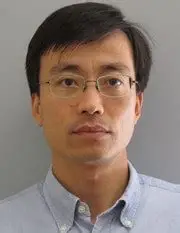
搜索网站、位置和人员

新闻与活动 活动信息
交叉科学中心系列讲座CIS Seminar Series | Spatiotemporal activity dynamics in the brain: organizational principles and functioning mechanisms
时间
2025年7月11日(周五)
下午14:00-15:00
地点
西湖大学云谷校区学术环E10-211
主持
西湖大学交叉科学中心讲席教授汤雷翰
受众
全体师生
分类
学术与研究
交叉科学中心系列讲座CIS Seminar Series | Spatiotemporal activity dynamics in the brain: organizational principles and functioning mechanisms
时间:2025年7月11日(周五)下午14:00-15:00
Time:14:00-15:00, Friday, July 11, 2025
主持人: 西湖大学交叉科学中心讲席教授汤雷翰
Host: Dr. Leihan Tang, Chair Professor, the Center for Interdisciplinary Studies
地点:西湖大学云谷校区学术环E10-211
Venue: E10-211, Yungu Campus
讲座语言:英文
Lecture Language: English

Prof. Pulin Gong
University of Sydney
主讲人/Speaker:
Dr. Pulin Gong is a Professor at the University of Sydney, where he leads the Neurophysics Group. He also serves as an Associate Editor for the Journal of Computational Neuroscience. Prior to his appointment at the University of Sydney, Dr. Gong was a staff scientist at the RIKEN Brain Science Institute in Japan. His research focuses on exploring the self-organizing mechanisms behind brain spatiotemporal dynamics and uncovering the principles that govern how these dynamics support neural computations.
讲座摘要/Abstract:
The large-scale activity of the brain exhibits rich and complex patterns, but the spatiotemporal dynamics of these patterns and their roles in brain functions remain unclear. In this talk, we will demonstrate that brain activity forms propagating wave patterns, such as spirals or vortices. These wave patterns and their interactions play a crucial role in coordinating large-scale activity flow between distributed functional regions. This coordination mechanism enables the flexible reconfiguration of task-driven activity flow between bottom-up and top-down directions during cognitive processing. Additionally, we will introduce a theory termed Fractional Neural Sampling (FNS) to explain how wave patterns implement sampling-based probabilistic computation. We will show that FNS provides a unified account of various brain functions, from visual perception inference to attentional sampling and interareal communication, and it has important implications for understanding the dynamics of deep learning.
理学院,徐恺吟,邮箱:xukaiyin@westlake.edu.cn
School of Science, Kaiyin Xu, Email: xukaiyin@westlake.edu.cn

















